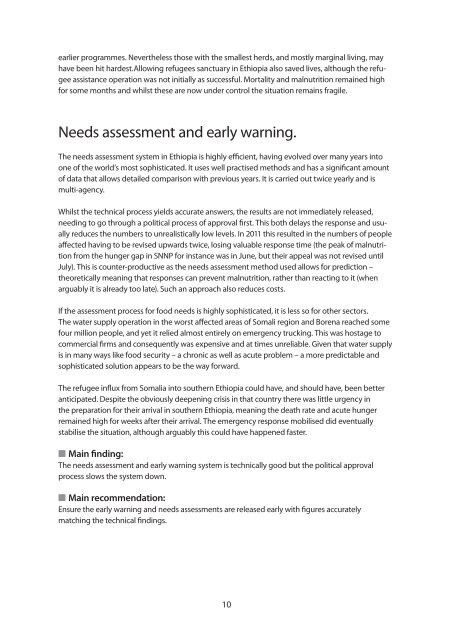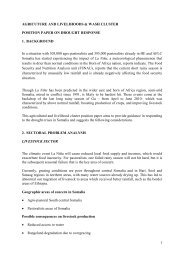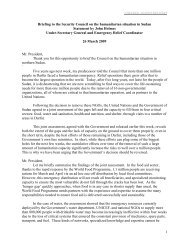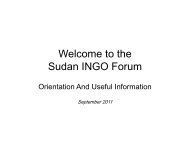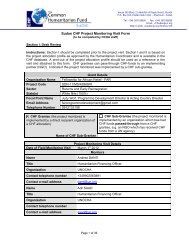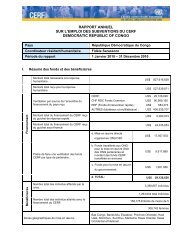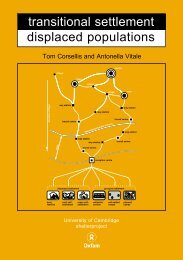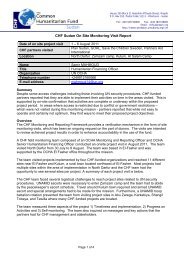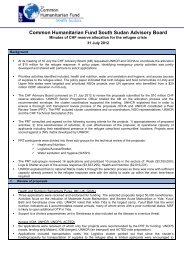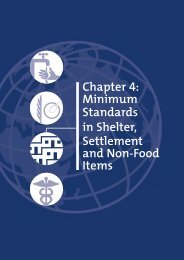Ethiopia - OCHANet
Ethiopia - OCHANet
Ethiopia - OCHANet
Create successful ePaper yourself
Turn your PDF publications into a flip-book with our unique Google optimized e-Paper software.
earlier programmes. Nevertheless those with the smallest herds, and mostly marginal living, may<br />
have been hit hardest.Allowing refugees sanctuary in <strong>Ethiopia</strong> also saved lives, although the refugee<br />
assistance operation was not initially as successful. Mortality and malnutrition remained high<br />
for some months and whilst these are now under control the situation remains fragile.<br />
Needs assessment and early warning.<br />
The needs assessment system in <strong>Ethiopia</strong> is highly efficient, having evolved over many years into<br />
one of the world’s most sophisticated. It uses well practised methods and has a significant amount<br />
of data that allows detailed comparison with previous years. It is carried out twice yearly and is<br />
multi-agency.<br />
Whilst the technical process yields accurate answers, the results are not immediately released,<br />
needing to go through a political process of approval first. This both delays the response and usually<br />
reduces the numbers to unrealistically low levels. In 2011 this resulted in the numbers of people<br />
affected having to be revised upwards twice, losing valuable response time (the peak of malnutrition<br />
from the hunger gap in SNNP for instance was in June, but their appeal was not revised until<br />
July). This is counter-productive as the needs assessment method used allows for prediction –<br />
theoretically meaning that responses can prevent malnutrition, rather than reacting to it (when<br />
arguably it is already too late). Such an approach also reduces costs.<br />
If the assessment process for food needs is highly sophisticated, it is less so for other sectors.<br />
The water supply operation in the worst affected areas of Somali region and Borena reached some<br />
four million people, and yet it relied almost entirely on emergency trucking. This was hostage to<br />
commercial firms and consequently was expensive and at times unreliable. Given that water supply<br />
is in many ways like food security – a chronic as well as acute problem – a more predictable and<br />
sophisticated solution appears to be the way forward.<br />
The refugee influx from Somalia into southern <strong>Ethiopia</strong> could have, and should have, been better<br />
anticipated. Despite the obviously deepening crisis in that country there was little urgency in<br />
the preparation for their arrival in southern <strong>Ethiopia</strong>, meaning the death rate and acute hunger<br />
remained high for weeks after their arrival. The emergency response mobilised did eventually<br />
stabilise the situation, although arguably this could have happened faster.<br />
n Main finding:<br />
The needs assessment and early warning system is technically good but the political approval<br />
process slows the system down.<br />
n Main recommendation:<br />
Ensure the early warning and needs assessments are released early with figures accurately<br />
matching the technical findings.<br />
10


